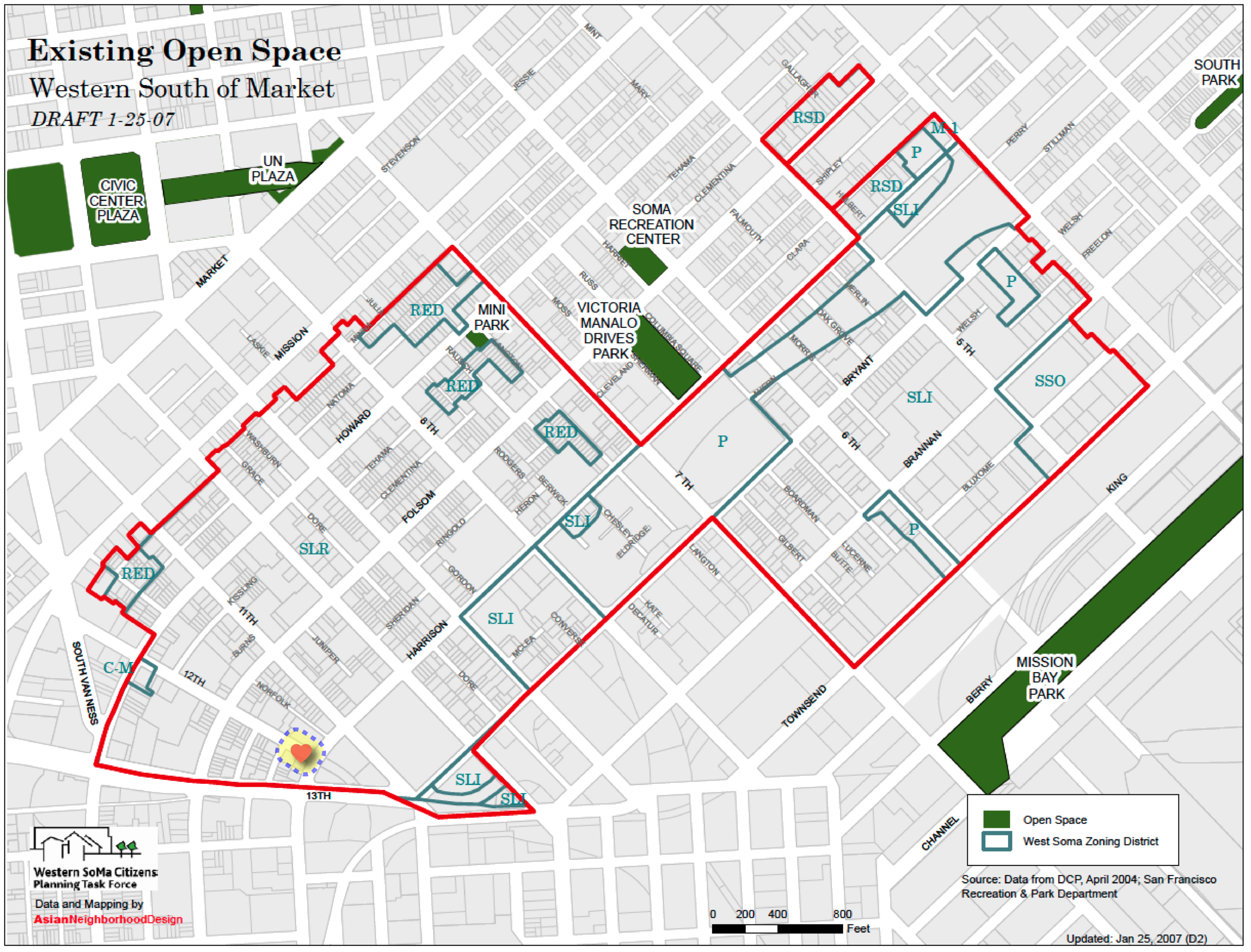Site Context
The Western SoMa neighborhood surrounding Eagle Plaza features a mix of existing single- and multi-family residential buildings, small businesses and light industrial uses. Largely due to its industrial past, there is a significant lack of public open space in this neighborhood, with less than 1% of the citywide average ratio of open space acreage per resident (Western SoMa Community Plan, p7.2). As this area experiences growth, there is a strong desire to both add open space and to recognize the strong cultural heritage of the local Leather, LGBTQ and Filipino communities. Eagle Plaza would fill these needs.

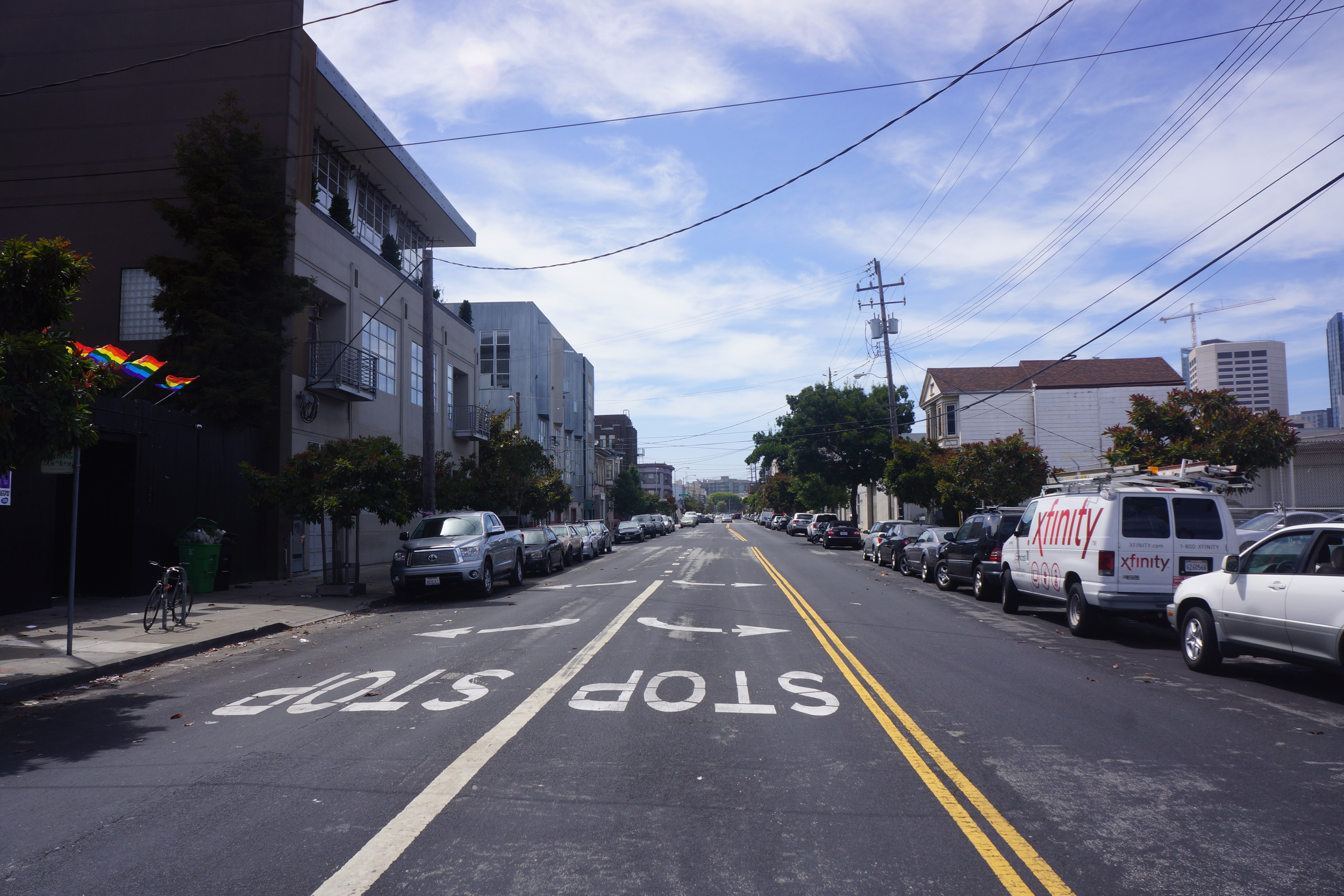


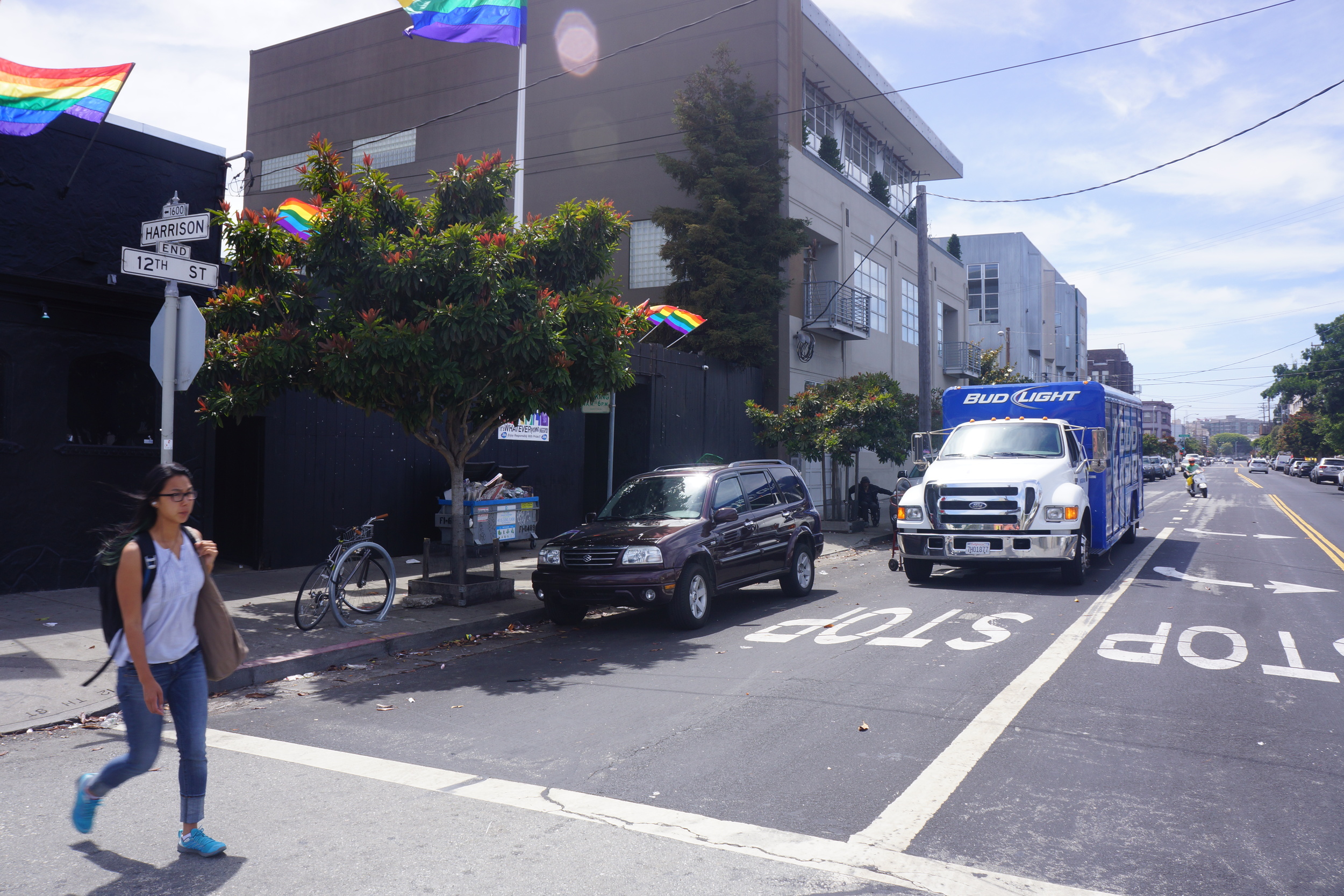
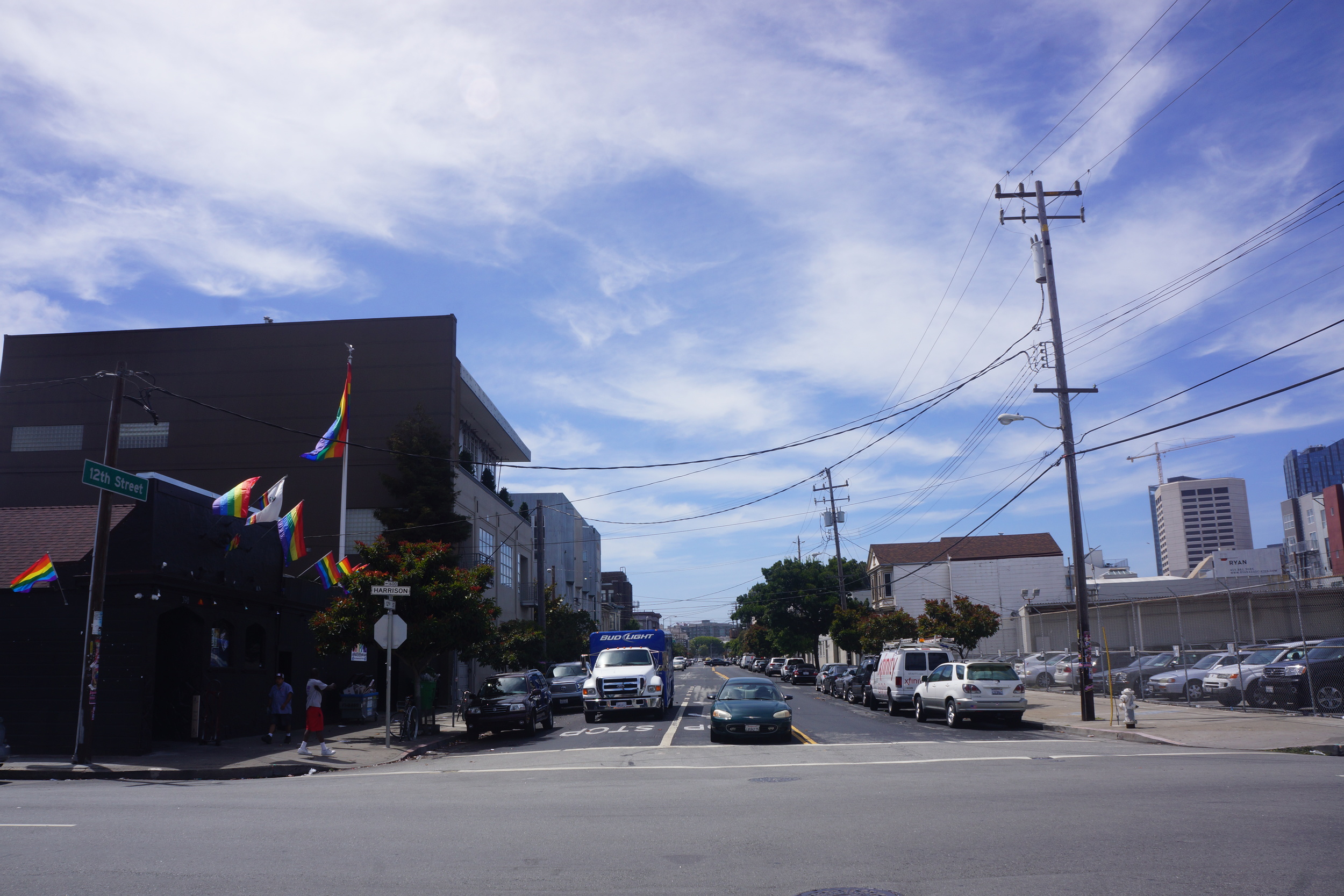
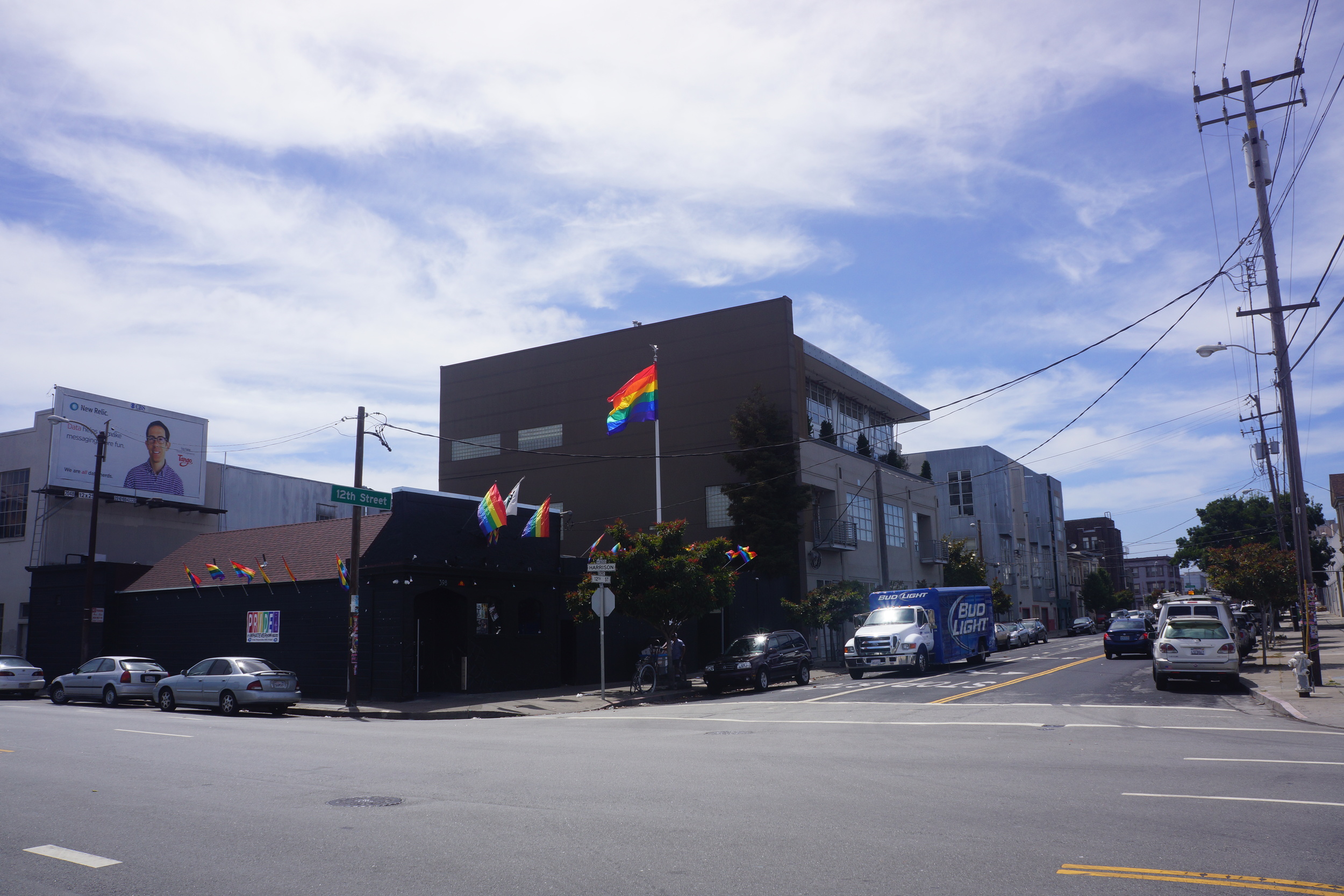
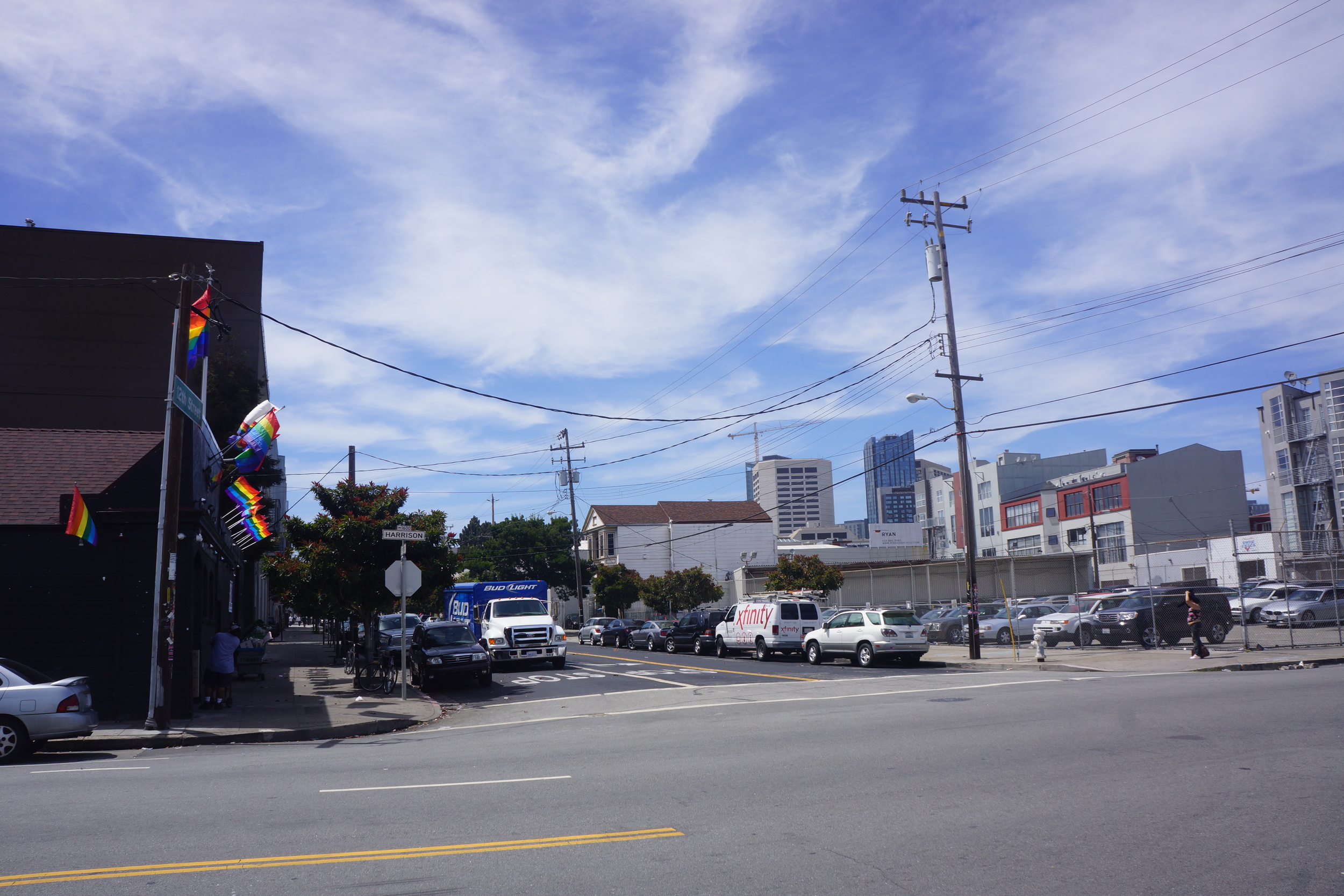
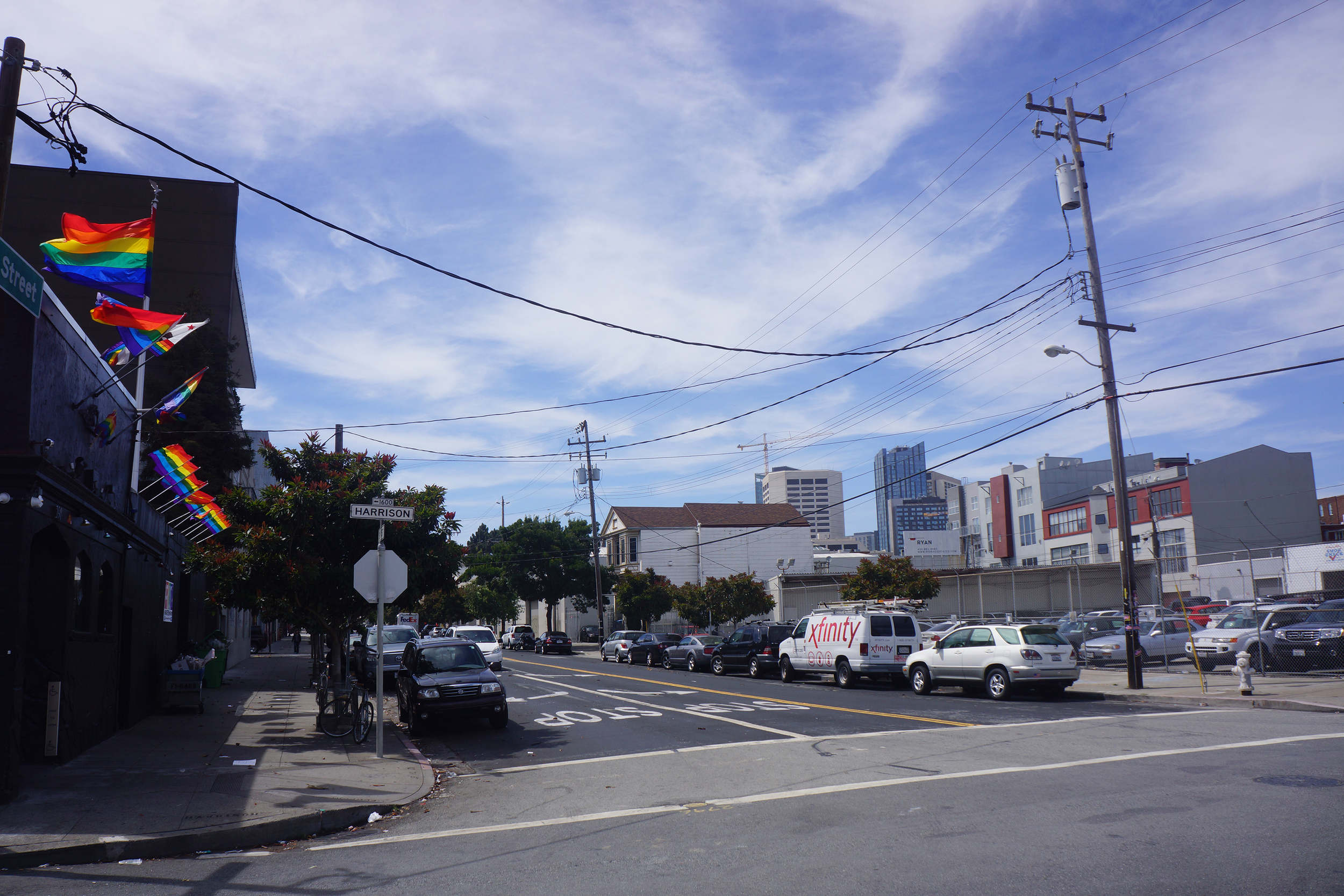
Leather + LGBTQ Context
Western SoMa, also known as Folsom Gulch, is an important neighborhood for San Francisco's Leather and LGTBQ (Lesbian, Gay, Bisexual, Transgender, & Questioning) community. Preservation and community activists have long sought to commemorate Folsom Gulch’s rich cultural history for the broader benefit of its residents, small businesses, and local and international visitors.
In 2011, the San Francisco Planning Department published, “Recognizing, Protecting and Memorializing South of Market LGBTQ Social Heritage Neighborhood Resources,” in an effort to document LGBTQ neighborhood features and make recommendations for celebrating these past and present neighborhood resources. The idea for a public plaza has emerged as a way to support this effort by creating a physical commemoration of Folsom Gulch’s Leather and LGBTQ history.
Additionally, the formation of the first-ever Leather Cultural District in 2018 reinforces the neighborhood's desire to recognize, protect and celebrate leather's influence and history here.
“Eagle Plaza” has been the working name of this new public plaza, given its location adjacent to the SF Eagle. The SF Eagle is a historic cornerstone of San Francisco's leather community, serving as an active community hub locally and a symbol of pride worldwide. The plaza will reflect this history and become a community gathering space.
City Planning Context
The idea and design of Eagle Plaza are supported by multiple City planning documents that identify the need for more public green and open space in Western SoMa, and the need for a physical commemoration for Folsom Gulch's Leather and LGBTQ social heritage.
(Click on the maps to the left to see where the Eagle Plaza site fits into City planning document maps).
Office of the Mayor: Mayor London Breed Signs Legislation to Permit Eagle Plaza (2019):
“While our Federal Administration is attempting to erase members of the LGBTQ community, we in San Francisco take pride in celebrating all those who bring diversity to our City. The new Eagle Plaza will be a place where we can recognize the Leather community and all LGBTQ people for their contributions to Western SOMA and our City, while also creating a much-needed new open space for all of our residents in the neighborhood,” said Mayor Breed.
Western SoMa Community Plan (2011) :
“Some public agencies such as the Department of Public Works, Municipal Transportation Agency along with the Department of Planning, the Department of Public Health, and the community have identified Townsend, 7th, 11th and 12th Streets as some of the major streets for improvements that will lead to making streets more pedestrian friendly, safer, and act as green urban connectors in a larger green urban path…By comparing a portion of 9th Street and 12th Street between Harrison and Mission Streets it can be seen that …12th Street carries only a low average of 325 vehicles per hour... Accordingly, 12th Street could eventually be reconfigured to restrict automobile traffic, and become “pedestrianized"..." (p13)
San Francisco General Plan Open Space Element (2014):
“Creatively develop publicly-owned rights-of-way and streets into open space:…permanent street closures in the City presents a great opportunity to take advantage of existing street rights-of-way to create space for people to walk or ride their bike." (Policy 3.1)
District 6 Open Space Task Force's Recommendations for Acquisition of New Parks and Open Space (2013):
West SoMa's residential population is projected to grow by 91%, and jobs are expected to increase by 36% between 2008 and 2030 (Table 2). "These high growth projections illustrate the extensive need for additional open space that will be created by future housing and commercial development in District 6." (p 8)..."neighborhoods in District 6 need to have easily accessible, central public open spaces that can function as the “heart” of the neighborhood" (p 13)
Recognizing, Protecting, and Memorializing South of Market LGBTQ Social Heritage Neighborhood Resources (2011)
"[The Plan proposes] To use the urban landscape to celebrate public history, using public features as a way to educate and accept diversity, leaving an important legacy at the heart of the neighborhood. Honor a handful of LGBTQ sites which have embodied the essence of neighborhood legacy..." (p 2). The SF Eagle is identified as one of these important LGBTQ asset to recognize as, "important to gay/leather SoMa history" (p9-10).








